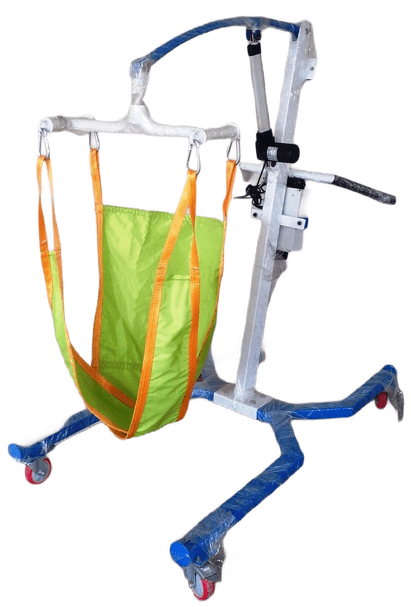Couch to wheelchair transfers can be challenging for both caregivers and individuals with mobility limitations. However, with the right equipment and techniques, these transfers can be made safer and more manageable. In this guide, we’ll explore the importance of patient hoists, lifts, and transfer techniques in ensuring a smooth transition from the couch to a wheelchair.
Understanding the Need for Patient Hoists and Lifts
- Enhancing Safety: Patient hoists and lifts play a crucial role in enhancing safety during transfers. These devices are designed to minimize the risk of injury to both the caregiver and the individual being transferred.
- Reducing Physical Strain: Caregivers often face physical strain during manual transfers. Patient hoists and lifts help alleviate this strain by providing mechanical assistance, reducing the risk of musculoskeletal injuries.
Choosing the Right Equipment
- Patient Hoists: Patient hoists are essential tools for transferring individuals between surfaces, such as from a couch to a wheelchair. These devices typically include a sling that supports the individual, along with a mechanical or electric lifting mechanism.
- Patient Lifts: Patient lifts are versatile devices designed for various transfer scenarios. They can be mobile or ceiling-mounted, offering flexibility in different caregiving environments. The choice between a patient hoist and lift depends on factors such as space constraints and the specific needs of the individual.
Mastering Couch to Wheelchair patient hoists Transfers – Step by Step

- Assess the Individual’s Mobility: Before initiating a transfer, it’s essential to assess the individual’s mobility level. Understanding their abilities and limitations will guide the selection of the appropriate transfer equipment.
- Prepare the Environment: Ensure that both the couch and the wheelchair are properly positioned for a smooth transfer. Clear any obstacles and make sure there is ample space for the equipment and caregivers to maneuver.
- Positioning the Patient Sling: If using a patient hoist, carefully position the sling around the individual, ensuring proper support and comfort. Familiarize yourself with the hoist controls to operate it smoothly.
- Engage the Lift Mechanism: Activate the patient hoist or lift mechanism, lifting the individual slightly off the couch. Take your time and make sure the transfer is gradual and controlled.
- Transfer to the Wheelchair: Move the individual horizontally, ensuring a smooth transition from the couch to the wheelchair. Pay attention to the individual’s comfort and stability during the transfer.
Conclusion
Patient hoists and lifts are indispensable tools for caregivers tasked with facilitating transfers from a couch to a wheelchair. By prioritizing safety, reducing physical strain, and employing the right techniques, caregivers can ensure a comfortable and secure transfer experience for individuals with limited mobility. Investing in quality patient transfer equipment and mastering the associated techniques is a key step towards improving the overall caregiving experience.

